Math games puzzles in pictures for schoolchildren in grades 5-7
Klochkova Natalya Konstantinovna, mathematics teacher, MBOU "Bukharay Secondary School" Bukharay village, Zainsky districtDescription: This work can be used in mathematics lessons in grades 5–7. Solving puzzles can be offered to students when performing mental calculations, and can be offered as didactic material for homework. This work can serve as a guide for extracurricular activities and electives. Solving puzzles develops a child’s intelligence and teaches him to find a way out of difficult situations, which, of course, will be useful in life. By solving puzzles, children replenish their vocabulary, develop attention and imaginative thinking, train visual memory, learn to write correctly and remember new words.
Target: development intellectual abilities, formation of logical thinking.
Tasks:
Educational: teach students to solve puzzles with a mathematical theme.
Developmental: expand students' horizons in the field of mathematics.
Educational: to cultivate a conscious attitude towards mathematics as an important subject.
Introduction:
A rebus is a puzzle in which a word is encrypted. This word is given in the form of pictures using letters and numbers, as well as certain shapes or objects. Rebus is one of the most interesting puzzles.
The word COMPUTER is encrypted in this picture.
There are certain rules for solving puzzles.
1. A comma at the very beginning of a word indicates that you need to remove the first letter in this word, and a comma at the end means that you need to remove the last letter in the word. Two commas - remove two letters. In the word mosquito we remove the last two letters AP, in the word iron we remove the first letter U and the last letter G.
2. Crossed out numbers indicate that the letters standing in this place are removed. In the word five we remove the second and third letters, that is, YAT. If letters are crossed out, they are also removed from the word.
3. Numbers that are not crossed out indicate that the letters in places 2 and 3 must be swapped. In the word iron, the letters T and Y are swapped YUT. Now we read the word in full.
This picture encrypts the word PERPENDICULAR.

4. If the picture is upside down, then the word guessed using the picture is read from right to left. The word read is not turnip, but aper. The first letter A is removed. In the word stump, the last letter b is removed. The word whale is read backwards. In the word chair, the first two letters ST are removed. The names of all objects depicted in the rebus are read only in the nominative case.
5.An “arrow” or an “equals” sign indicates that one letter must be replaced by another. In our case, in the word tick, the letter T must be replaced with the letter D. Now the word can be read in full.
The word EAST is encrypted in this picture.
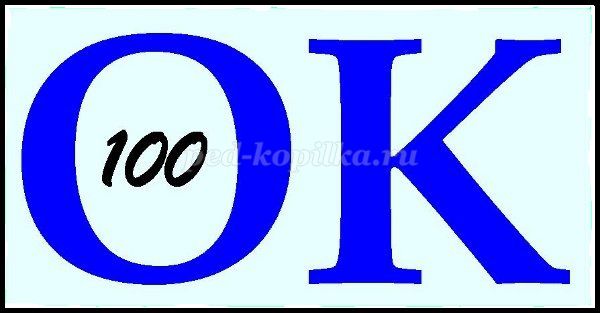
6.Letters, words or pictures can be depicted inside other letters, above other letters, under and behind them. Then prepositions are added: IN, ON, ABOVE, UNDER, FOR. Our letter O contains the number STO, so it turns out B-O-STO-K.
The word MAP is encrypted in this picture.
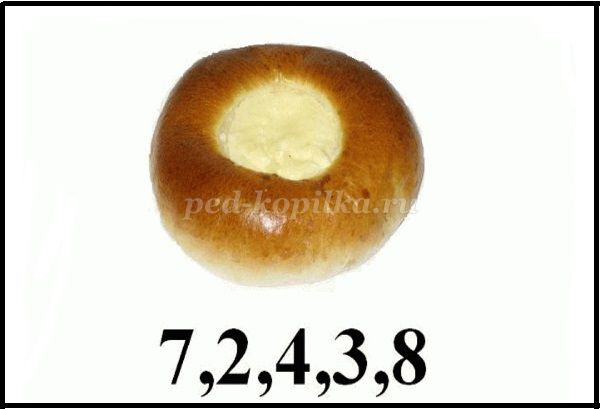
7.The numbers under the picture indicate that from this word you need to take the letters located in places numbered 7,2,4,3,8 and compose them in the order in which the numbers are located. In the word cheesecake you need to take the letters 7-K, 2-A, 4-P, 3-T, 8-A. You can read the word.
Let's try to solve a few puzzles in the field of mathematics.
PROOF
Rebus is a riddle in which the words to be solved are given in the form of pictures in combination with letters and other symbols, such as notes. Puzzles are a wonderful trainer for logic, thinking, and speech development.
Teach your child to solve puzzles. You will open to him new world!
At this stage it is enough to explain the basic rules:
1. The names of all objects depicted in the rebus are read only in the nominative case. Sometimes the desired object in the picture is indicated by an arrow.
2. Very often, an object depicted in a rebus may have not one, but two or more names, for example “leg” and “paw”. Or it can have one general and one specific name, for example, “tree” and “oak.” You need to choose the one that makes sense.
3. Sometimes it is necessary to drop one or two letters at the beginning or end of a word. In these cases, the symbol used is a comma. If the comma is to the left of the picture, then this means that the first letter of its name must be discarded; if it is to the right of the picture, then the last letter. If there are two commas, then two letters are discarded accordingly.
4. If in a rebus there is an image of an object drawn upside down, then its name must be read from the end.
There are a lot more rules. But for solving simple puzzles, these are enough.
Come up with your own puzzles together with your child. We are waiting for your answers!
Invite your child to solve these simple picture puzzles:
Rhinoceros
Hives
Skit
Centipede
Shoemaker
Pencil
Lemongrass
Angelina
Kalina
Carnation
Water lily
Hog
Onion
Rye
Som
Pillar
Sleeve
Invite your child to come up with simple children's puzzles with pictures together, and you will find a great activity for joint leisure time.
And if you like to solve puzzles, then we suggest you get acquainted with
When parents hear the words “educational games,” they most often think that this refers to preschoolers. It is for children from one to 7 years old that mothers carefully select educational games, coloring books and tasks. When children get older, and especially when they leave the walls primary school, then parents are already concerned about more serious things than playing.
They are more concerned about their children’s performance in mathematics, the Russian language and other serious subjects. Meanwhile, children aged 11 and 12 continue to love games, and an educational game for this age could well help schoolchildren chew the granite of science more successfully. Interesting puzzles for children aged 11–12 years with answers are one of these methods, but far from the only one.
Of course, if you offer a younger teenager simple coloring books or riddles, he will proudly refuse, considering himself too old for them. But you can choose something more complex for them. The repertoire of educational games for this age is much wider than for preschoolers.
School-age students help consolidate knowledge and encourage them to search for missing knowledge in almost any subject - from geography to literature and history. Riddles and coloring books familiar from preschool years are modified, become more complex and more fun, but can still captivate a child of 11 or 12 years old, helping to develop logical thinking, attention and ability to concentrate.
Charades, scanwords, puzzles, and various puzzles for children aged 11–12 years can be an excellent training for intelligence and the ability to think logically. The main thing is that the game should not be too simple to be interesting, but overly difficult tasks can also turn kids away from them.
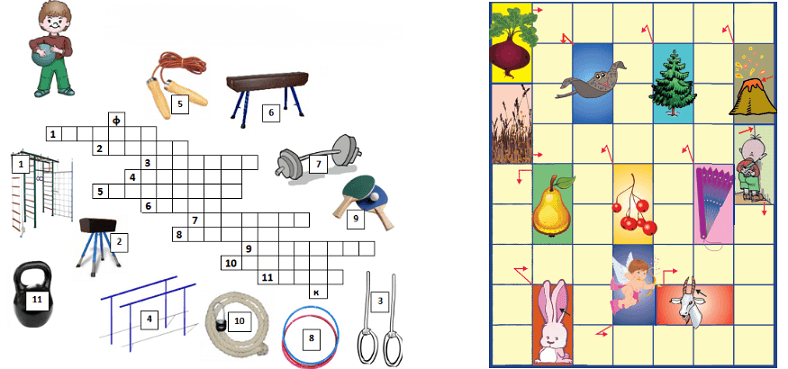
A crossword puzzle or cross word is an intellectual game where you need to write answers to questions and riddles on some topic into rows of cells intersecting vertically and horizontally. The rows and the questions corresponding to them are indicated by the same numbers. The beauty of a crossword puzzle is that you can adjust the level of difficulty not only by the questions asked, but also by the complexity of constructing the crossword puzzle itself. Simple, with a small number of intersections for beginners, more complex and voluminous for advanced ones.
Scanwords are a Scandinavian crossword with a large number of intersections, where the task may not be riddle questions, but definitions or even pictures. Another difference from the classic crossword puzzle is that the task can be located directly on the playing field, and the direction where you need to enter the answer is indicated by arrows. For children aged 11 and 12 years old, this form of crossword puzzle is available if they have already mastered the classic crossword puzzle well.
There are now many collections being published for schoolchildren, including crossword puzzles, scanword puzzles, coloring books and other educational entertainment in accordance with their age.
Charades and puzzles
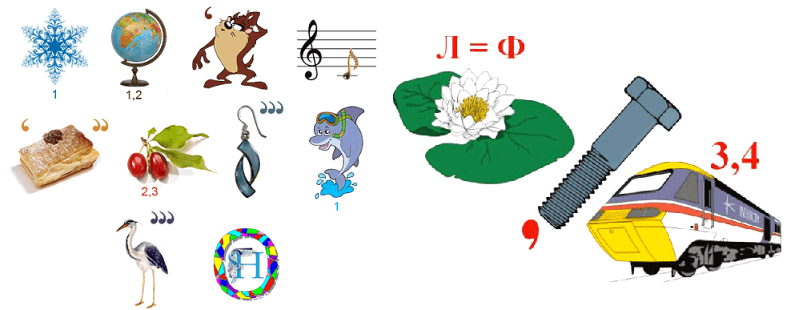
Charades and puzzles are another educational entertainment that can be interesting for children aged 11-12 years. Both charade and rebus are a game that is based on the fact that words - riddles are divided into syllables. But if in a rebus the syllables of the hidden word are presented in the form of a picture or coloring page, then in a charade each syllable is hidden in word riddles. For example:
My first syllable calls to itself,
Second syllable – house backwards
The first syllable is note - (note fa)
And the second syllable too, - (note G)
And the whole word looks like a pea. (beans)
At 11 and 12 years old, children are already good at solving verbal riddles. The rebus requires solving the riddle presented in the picture.
Puzzles for children with answers
How to solve them

Rebus is a game that develops logic, associative thinking, and consolidates knowledge of the Russian language. He can hide one or more words inside himself. You can create such riddles in pictures yourself, using, for example, coloring books for this. But to do this you need to know certain rules for designing a visual riddle.
- The word shown in the picture must completely or partially coincide with part of the hidden word.
- If the picture is upside down, this means that the word is read backwards.
- Commas before or after the picture mean that you need to remove the letter at the beginning or end of the drawn word, respectively. The number of commas standing indicates the number of letters to be discarded.
- Crossed out letters mean that they are excluded from the picture word when solving the puzzle. If there is another letter under the crossed out letter, then replace the crossed out letter with it.
- The completed letters are added to the syllables from the picture word. If the letter is written in front of the picture, then the guessed word begins with it. If after the picture, then we deliver the letter to the end of the rebus picture.
- In the rebus we can also encounter numbers. Firstly, the numbers can be part of the hidden word (7ya or o5). Secondly, numbers can indicate the serial number of letters that are taken from the rebus picture to solve the puzzle. Or if a number is crossed out, then, on the contrary, it is removed.
- If there is a plus sign between the parts of the rebus, this means that both of these parts together make up one word.
- The = sign between the letters means that we replace one letter everywhere with this other.
- If the picture and letters stand above each other, separated by a line, this means that when solving the riddle you need to use the prepositions “on”, “above”, “under”.
How to solve and solve puzzles
Mathematical games puzzles
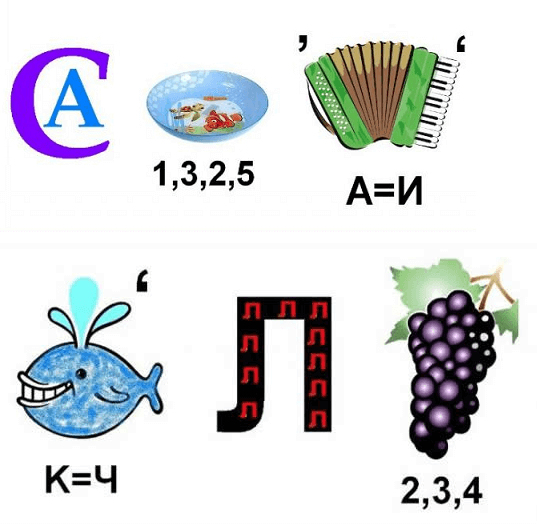
Charades and puzzles primarily help children better remember the spelling of words. But they also use puzzles in mathematics lessons. They develop well the logical thinking necessary for this science. In addition, mathematical games include puzzles that contain numbers, + and = signs.
For example, in this rebus from a word represented by a picture, the child needs to take the letters under the serial number indicated by the number. Then put them as written under the picture.
Mathematical games also include puzzles that contain terms and concepts from mathematics.
Puzzles with letters
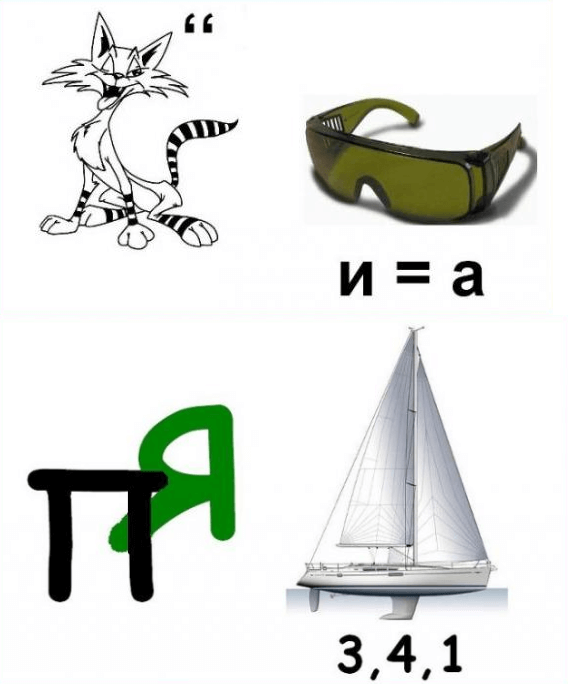
Sometimes a rebus does not contain pictures, but only letters. Here, in order to solve it, you need to take into account the arrangement of letters or syllables. When searching for an answer to a riddle, you will have to again use the prepositions “in”, “on”, “for”, etc. If the rebus is represented by a large number identical letters, then they need to be counted. Such puzzles are not used for children, only for schoolchildren.
If you decide to create puzzles yourself with your child, take coloring books as pictures, cut out what you need and use these rules to compose your own riddle. If there are a lot of pictures on the printed coloring book, then you can use arrows to indicate the one you need for the rebus.
Puzzles with answers in pictures



